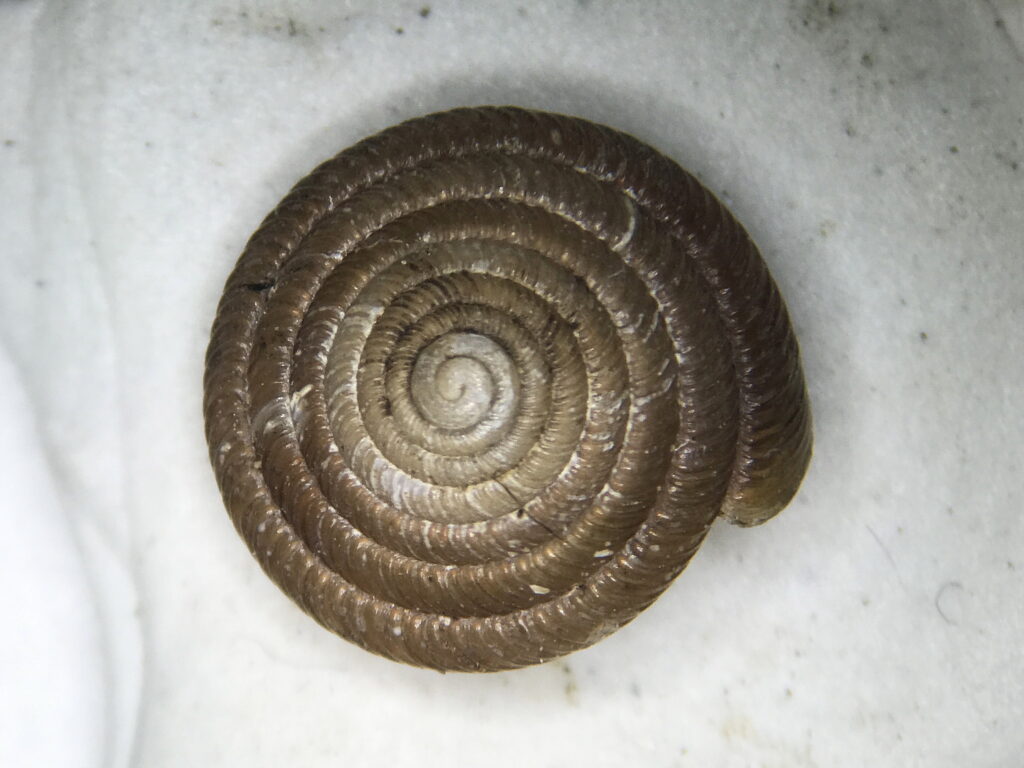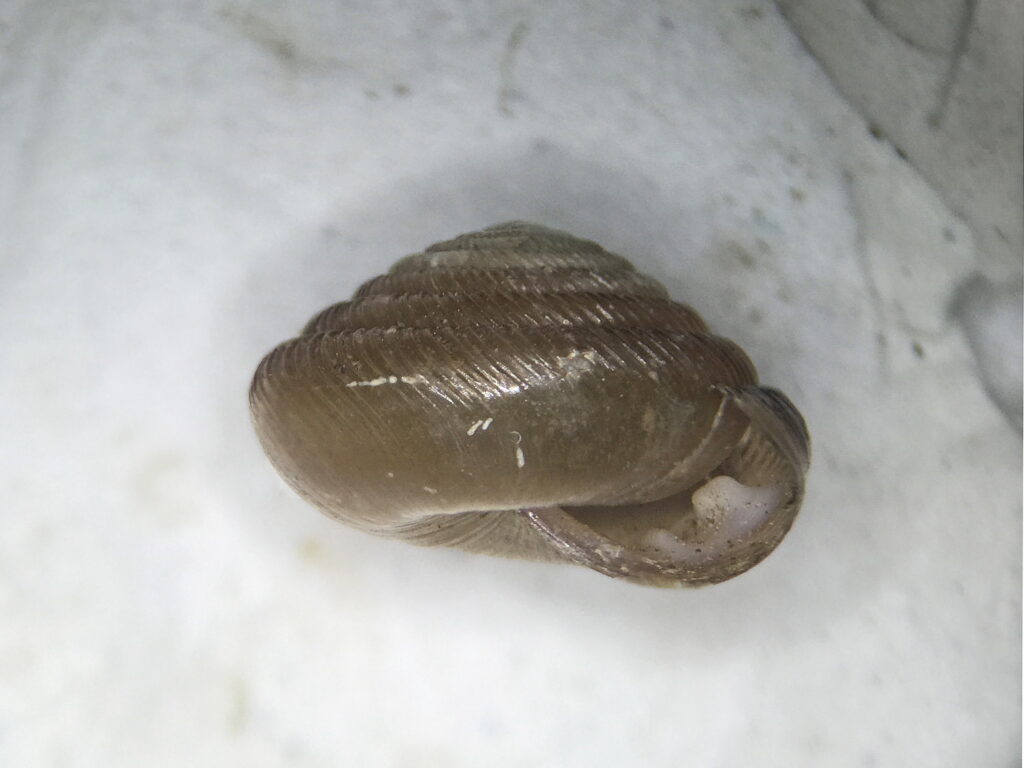



Image Usage Information
Family: Gastrodontidae
Common name: Brown Bellytooth
Discovery: Say, 1822
Identification
Width: 6.5-7 mm
Height: 4-5.5 mm
Whorls: 8+
The whorls of Gastrodonta interna are closely coiled and marked with evenly-spaced, curved radial striae. The base is smooth and pale in color, with only faint traces of the striae seen above. The base is concave around the umbilicus, which varies between individuals, from nearly closed to “distinctly” open (Hubricht, 1985). Two basal teeth obstruct the aperture.
Ecology
This animal is found in damp, wooded environments, particularly in deep piles of wet leaf litter and around rotting wood debris (Hubricht, 1985). In Tennessee it has been reported from two caves (Lewis 2005 in NatureServe, 2012).
Taxonomy
Gastrodonta interna has also been known as Gastrodonta interna interna, Helix interna, H. pomum-adami, and Zonites internus.
Distribution
Gastrodonta interna occurs east of the Mississippi River, in the Middle Atlantic and southeastern states. In Virginia it is reported only from the western part of the state. More northern museum records need verification.
Conservation
NatureServe Global Rank: G5, Secure.
NatureServe State Rank: Not ranked in West Virginia or Virginia.
